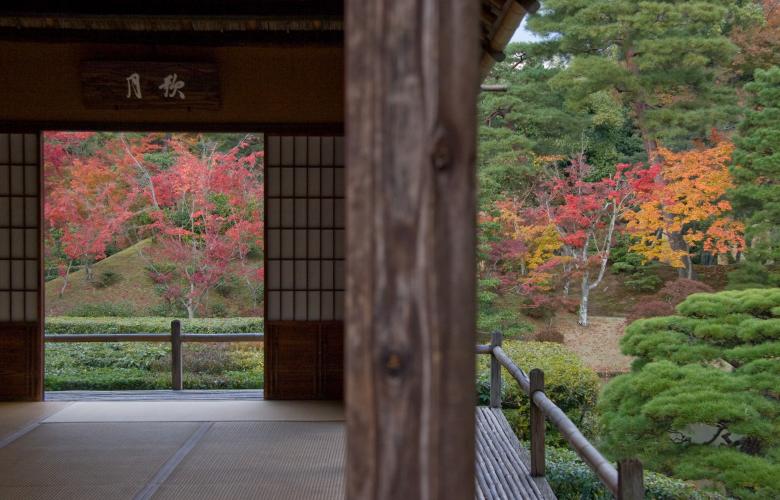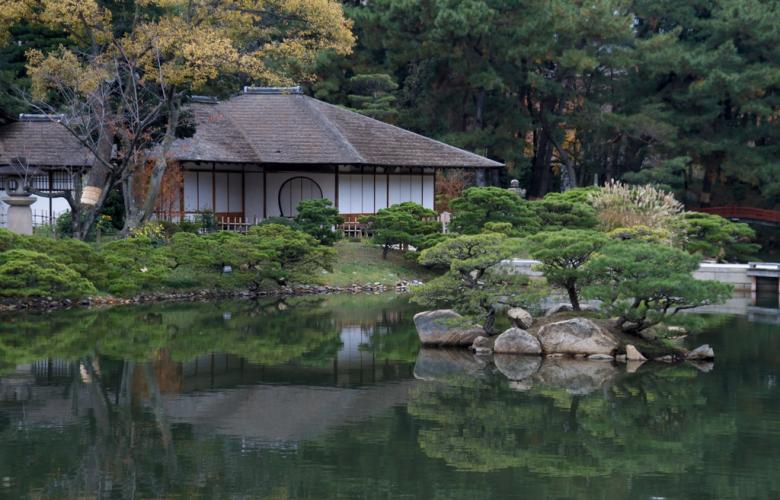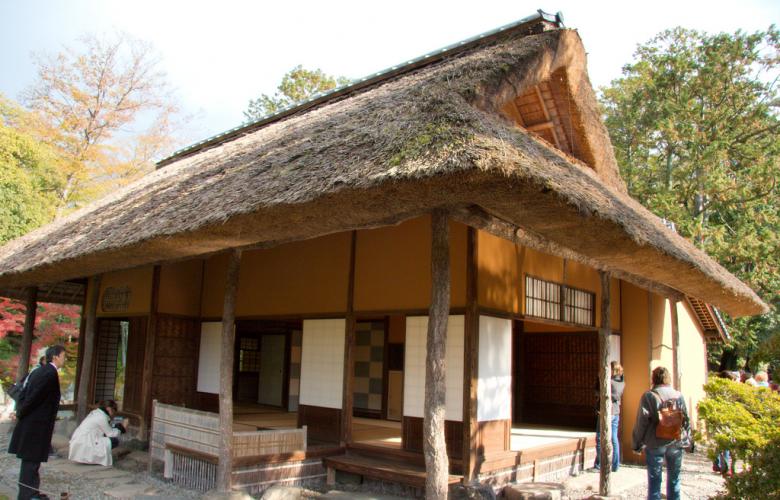A brief history
Sukiya-zukuri is a traditional Japanese style of residential architecture introduced in the late 16th century, during Japan’s Sengoku Period. At that time, the illustrious daimyō (feudal lord) Toyotomi Hideyoshi — who had significant influence in the realms of politics, culture and architecture — commissioned tea master Sen no Rikyū to be aesthetics advisor for a teahouse within Kyoto's Jurakudai palace. The building, called the Coloured Shoin, is considered the first-ever example of sukiya-zukuri architecture.
Suki has a complex meaning, but at its essence refers to refined taste, an appreciation for elegant things, and is strongly associated with the practice of tea ceremony. Zukuri refers to “style” in an architectural context.
Sukiya-zukuri’s teahouse-influenced aesthetic did not discriminate — many buildings, such as ryokan (inns), restaurants, shops and (eventually) the majority of homes, were designed in the style.
Key features
At its core, sukiya-zukuri favours small, modest spaces designed with natural materials. Wooden columns and earthen-plaster walls allow natural beauty to sit centre stage. Lavish and ornate details would only cloud such beauty.
On a technical level, sukiya-zukuri is characterised with having a nakabashira (central column), tokonoma (alcove) and tana (shelves). While shoin-zukuri (sukiya-zukuri's predecessor) dictates the exact placement of those elements, sukiya-zukuri offers the freedom of arrangement.
Examples of sukiya-zukuri architecture
The Coloured Shoin was the first example of the style, though it's no longer in existence as the Jurakudai palace was eventually dismantled in 1595. Archilovers can, however, visit one of the more famous structures done in sukiya-zukuri style, such as the Katsura Imperial Villa and Sumiya Pleasure House in Kyoto, as well as the Seifukan teahouse in Hiroshima's Shukkei-en Garden.
Similar to this:
Naoshima: An island gallery for Japan's top architects
Frank Lloyd Wright's legacy: The history of the evolving Imperial Hotel
Schemata Architects: Stripping back Tokyo's style







